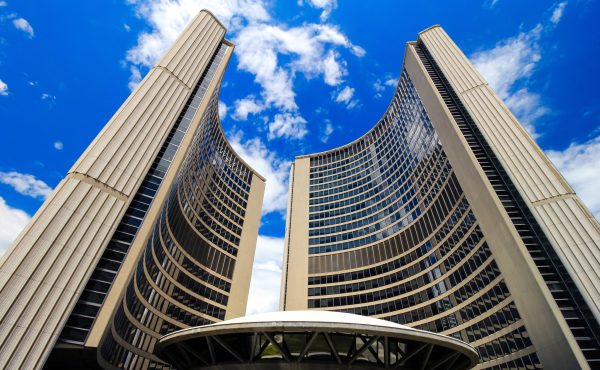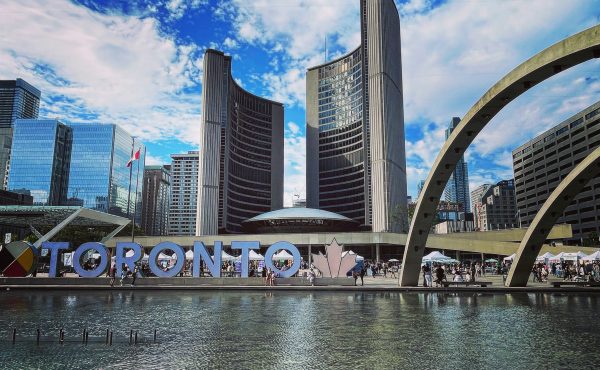This series of posts about ways to pay for new transit infrastructure in the Greater Toronto and Hamilton Area is only a start to what is a big conversation about a complex set of issues. The City of Toronto has already joined that conversation with this week’s Transportation Funding Strategy report (PDF), and local civic leaders group CivicAction will be starting a conversation of its own next week.
There are lots of further questions. What about a regional income tax? After we build the infrastructure, how do we pay for the operations? How can these fees be implemented politically — should we have a referendum?
Regional income tax
After my first post, Councillor Gord Perks asked why a regional income tax dedicated to transit funding isn’t a big part of the discussion. It would require the same legislation as a sales tax and would raise a similar amount of money. Regional income taxes exist in the United States, but according to the City of Toronto report on funding options (p. 8), none of those taxes are dedicated to transportation infrastructure. It may be that an income tax is not considered in these discussions of dedicated revenue because it’s so strongly associated with general revenues, although that’s really the same situation for the sales tax as well.
Does a regional income tax dedicated to funding transit make sense?
Operating costs
It’s great to build infrastructure, but once it’s built you need to run it, and transit generally requires public subsidies in order to run. Metrolinx’s The Big Move plan estimates that, by the time the project is completed, it will need $1.5 billion a year in operating costs.
We could imagine that whatever revenue tool is used for capital costs will simply continue, transitioning over to fund operations. But for most of the 30-year build-out period, operating costs will be growing even as $2 billion a year is spent on capital funding. How to pay for those costs at the same time is still very much up in the air (e.g. that could be the role of a regional income tax).
If we do build extensive new transit, how do we pay for the operating costs?
Referendum
As John Lorinc pointed out this week, the idea raising taxes is politically toxic, and the current provincial government is a minority that is trailing at the polls, making political risks unappealing. One way the provincial government could try to distance itself from responsibility for raising taxes could be to have Metrolinx and the regional governments hold a referendum in the GTHA on whether to implement transit infrastructure funding options (or, alternatively, abandon any major new transit infrastructure). In the United States, referendums have generally been the way in which local taxes have been raised to fund new transit. The results are mixed — some have succeeded, others have not. It often depends on how coherent the transit infrastructure plan is, and how much backing there is from both local politicians and civic leaders.
Given that the current Liberal provincial government holds a majority of its seats in the GTHA, a referendum that passed narrowly could still generate enough opposition to lose them crucial seats, so even this strategy might not be appealing. On the other hand, given the serious need for improved transportation in the region, doing nothing could also be politically dangerous.
What do our readers think about the idea of a GTHA referendum to approve or reject funding mechanisms for new transit?
photo by Rick Harris






4 comments
Thanks for the series.
The problem with referendums is that people often wont do the right thing and when they vote no it makes it even harder for a politician to do the right thing down the road. Democracy is great but given a choice people often vote in self interest rather than common good.
The question of operating funds is actually most important in the 905 regions that would be building from a smaller base.
In Toronto, increased service would be more incremental. There may be some efficiencies due to lower headways with longer LRTs and streetcars and the introduction of articulated buses, even if other operating costs will increase related to additional sections of subway (/underground LRT).
In the 905, there is a much weaker base upon which to build. Even if the route network structure is currently there, a lot of those routes only run every 20 or 30 minutes outside of rush hour, and maybe every 10 to 20 during rush hour. That’s where a real increase in service is necessary to make transit a convenient and attractive travel alternative, and that is going to be a substantial cost when compared to existing funding (already under pressure for cutbacks in Mississauga).
For the next 5 years it is rather a pointless discussion to talk of new revenue instruments as Ontario is about to experience an extreme economic downturn in order to reduce the deficit and we will be lucky if the Province does not shut off the tap on money committed to Transit City. The housing/construction boom has been feeding Toronto’s economy for a decade and the just announced 25% drop in sales numbers is just the beginning of the bust that will ripple through our entire economy.
There are really 3 concerns, and the future will answer all of them….
1) Density, the higher the density, the more efficient transit becomes, Toronto has very high density in the core and it gradually drops off to the edges of the city, it then drops off much faster in the 905, at some point in this, it becomes impractical to run transit. It’s unfair to tax people who are not serviced, to service people who are.
2) Fuel costs, with gasoline running between $1.20 at $1.40/L fewer and fewer people can afford to drive, there is a breaking point, where people will simply park the car and take transit, where available. It’s a sliding scale, there are people who have surpassed it already, as fuel prices increase more and more people reach that point.
3) location, location, location. Yeah the big house with the $900/month mortgage was fine when you could drive cheaply, but if your spending $900/month on your mortgage and another $900/month to get to work, that $1,700/month condo in the city, starts looking better and better.